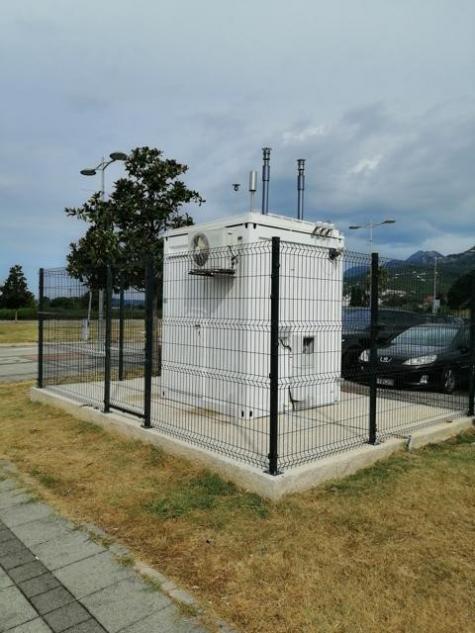
In response to the third Environmental Performance Review (EPR) of Montenegro carried out in 2015, Montenegro identified air quality as a priority for the well-being of its population and nature. The country has relatively good air quality in its coastal region, which benefits from short, mild winters and many windy days, while its central zone and the capital suffer from episodes of poor air quality due to heavy traffic year round and domestic heating in winter. The northern region, with its harsh winters, is also exposed to emissions from household heating with coal and firewood.
Overall, the air quality in Montenegro is considered to be moderately unsafe according to WHO Guidelines, especially in Podgorica, Pljevlja and Nikšić, causing premature deaths, hospitalizations and other health impacts. Air quality in Montenegro is worsened by domestic industrial activity in the form of its steelmaking and aluminium industries, alongside agriculture (for example, use of land, methane emissions from animal husbandry) and tourism (for example, increased road traffic). In 2018, due to exposure to high concentrations of fine particulate matter (PM2.5) an estimated 8,600 years of life were lost for the country’s population of 622,227 and there were 640 premature deaths (See European Environment Agency (EEA), “Air quality in Europe – 2020 report”, EEA Report No 9/2020 (Luxembourg, Publications Office of the European Union, 2020), tables 10.1 and 10.2, p. 108–109).
Assisted by UNECE, the country has developed and adopted a set of legal, policy and guidance documents aimed at reducing air pollution, especially emissions of sulfur oxides (SOx), nitrogen oxides (NOx), particulate matter (PM), ammonia (NH3) and volatile organic compounds (VOCs).
A new National Strategy for Air Quality Management has been developed and is undergoing public consultation before being submitted for adoption in the second quarter of 2021. The National Strategy aims to contribute effectively to achieving the Sustainable Development Goals related to air quality and biodiversity and ecosystem protection by reducing the levels of air pollution in line with the WHO Guidelines and the UNECE Convention on Long-range Transboundary Air Pollution (Air Convention). The Strategy is also expected to contribute to reducing the health-related costs of air pollution by improving the well-being of the population, as well as favouring the transition to a green economy.
The National Strategy integrates several elements, all of which were prepared with UNECE support, including: an analysis of air quality trends in the ten-year period 2009–2019 and an analysis of air quality during the COVID-19 outbreak; a programme of measures for reducing air pollution (Air Pollution Control Programme); and air quality plans for three air quality zones in Montenegro (northern, central and coastal).
These activities enabled Montenegro to submit an updated inventory of emissions covering the missing data for the period 2012–2018, with recalculation of the entire time series according to a new methodology, to the European Environment Information and Observation Network (Eionet) and the Air Convention secretariat in 2020. UNECE is also helping Montenegro to become a Party to the Protocol to Abate Acidification, Eutrophication and Ground-level Ozone (Gothenburg Protocol) under the Air Convention. Moreover, through a mix of short- and long-term measures, the Air Pollution Control Programme is expected to reduce emissions and thus mitigate the negative effects of air pollution on human health and the environment.

